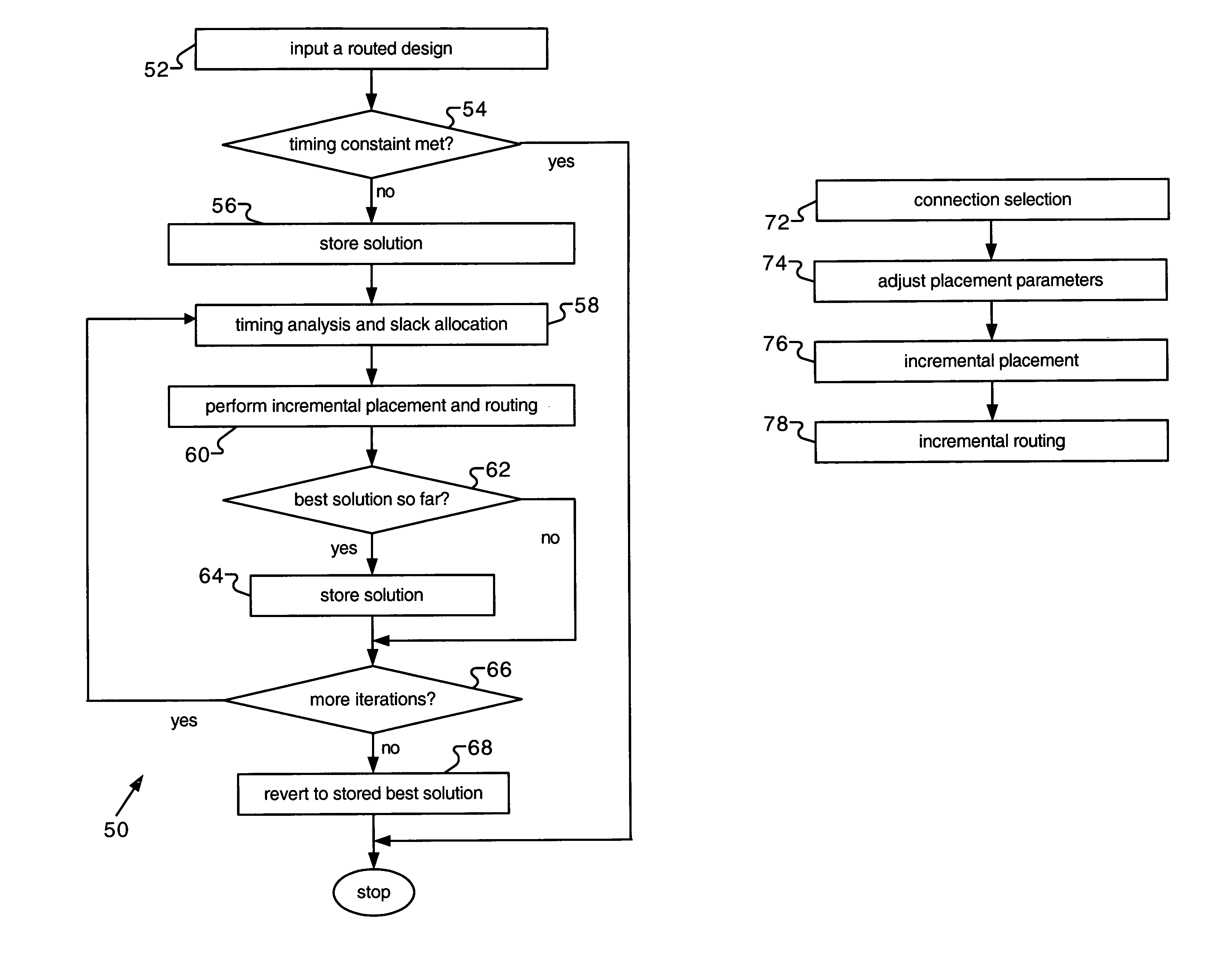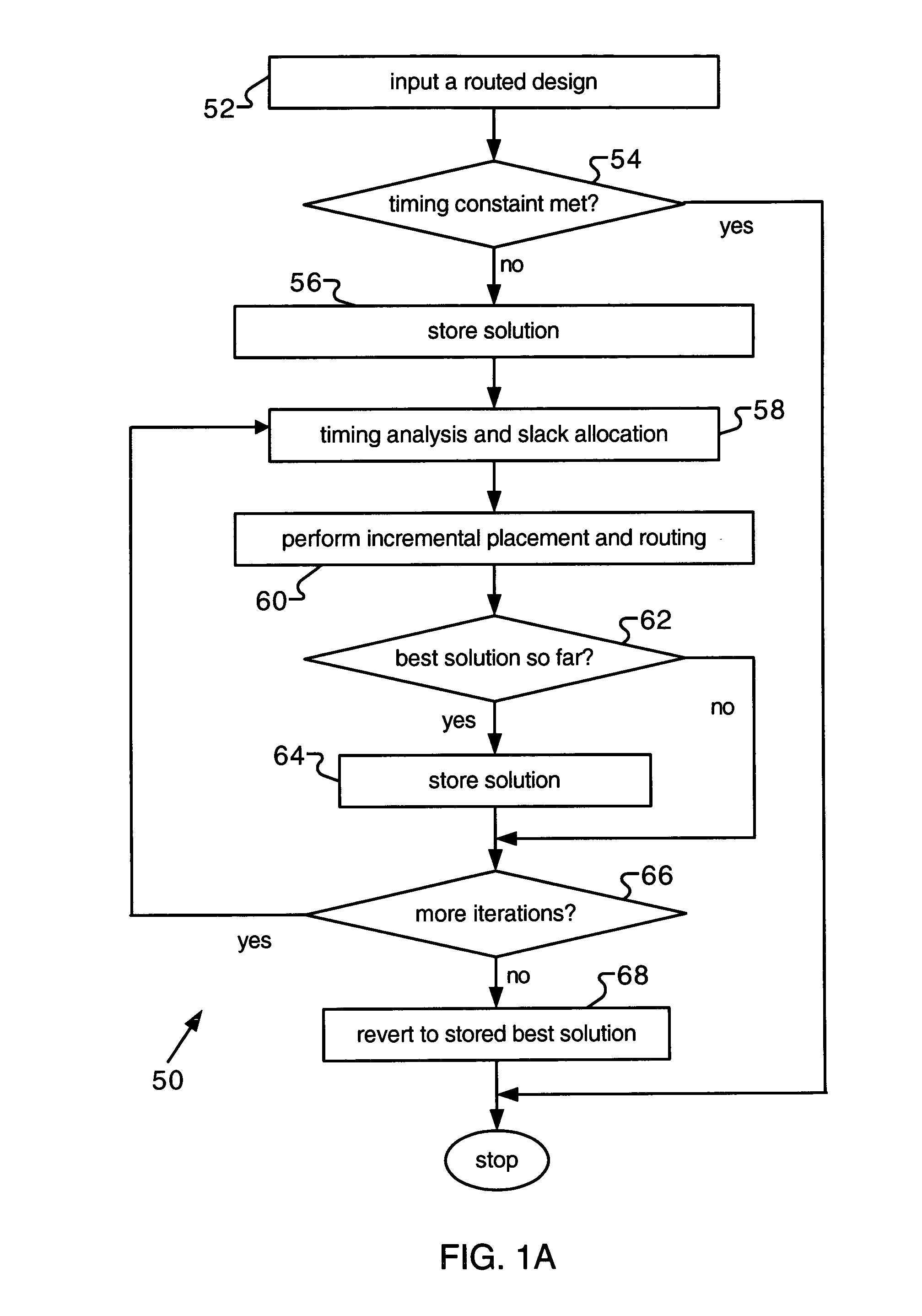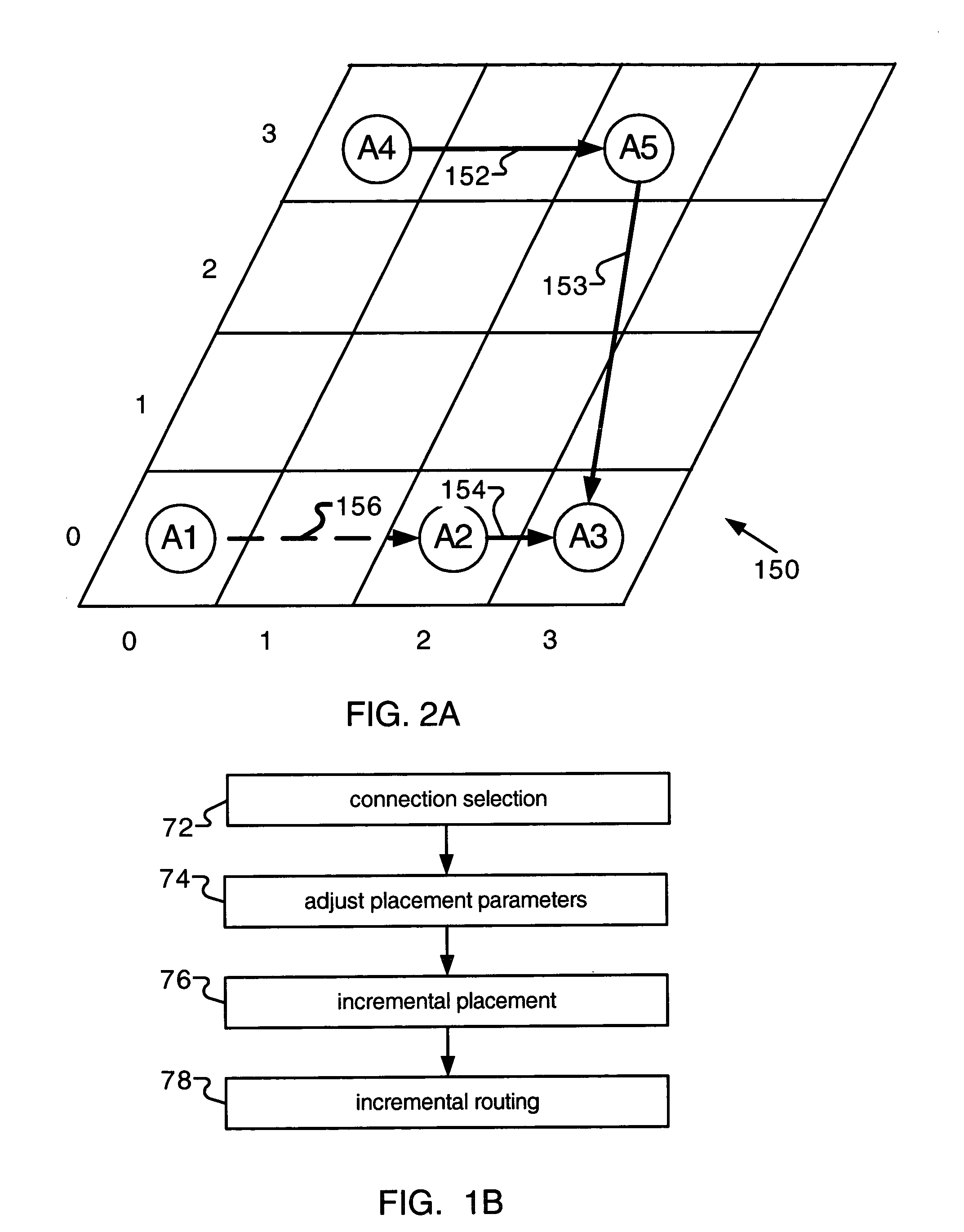Post-layout optimization in integrated circuit design
a technology of integrated circuits and layouts, applied in computer aided design, program control, instruments, etc., can solve problems such as inability to adjust incrementally, long delays, and signal degradation, and achieve unacceptable delays and signal degradation
- Summary
- Abstract
- Description
- Claims
- Application Information
AI Technical Summary
Problems solved by technology
Method used
Image
Examples
Embodiment Construction
[0015]The present invention relates to a new method for post-layout timing optimization. In the following description, numerous specific details are set forth in order to provide a more thorough understanding of the present invention. However, it will be apparent to one skilled in the art that the present invention may be practiced without these specific details. In other instances, well-known features have not been described in detail in order to avoid obscuring the present invention.
[0016]FIG. 1A is a flow chart showing an overview of a post-layout timing optimization operation 50 of the present invention. In step 52, a routed design is accepted for processing. In step 54, timing analysis is performed to determine whether timing constraints have been met. If the constraints have been met, operation 50 terminates. If the constraints have not been met, the original placement and routing solution for the design is stored (step 56). In step 58, timing analysis and slack allocation ope...
PUM
 Login to View More
Login to View More Abstract
Description
Claims
Application Information
 Login to View More
Login to View More - R&D
- Intellectual Property
- Life Sciences
- Materials
- Tech Scout
- Unparalleled Data Quality
- Higher Quality Content
- 60% Fewer Hallucinations
Browse by: Latest US Patents, China's latest patents, Technical Efficacy Thesaurus, Application Domain, Technology Topic, Popular Technical Reports.
© 2025 PatSnap. All rights reserved.Legal|Privacy policy|Modern Slavery Act Transparency Statement|Sitemap|About US| Contact US: help@patsnap.com



